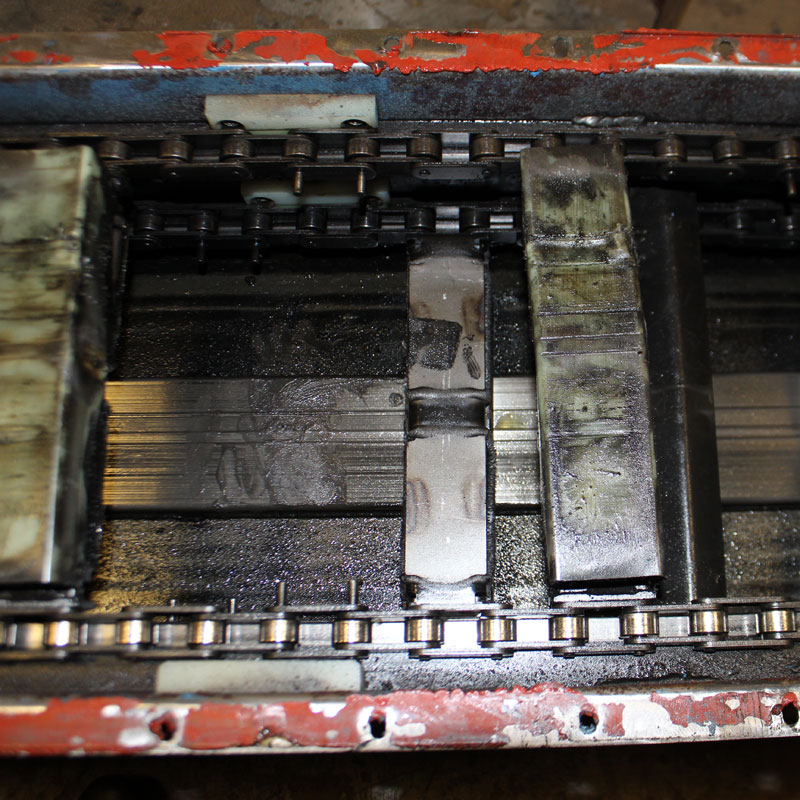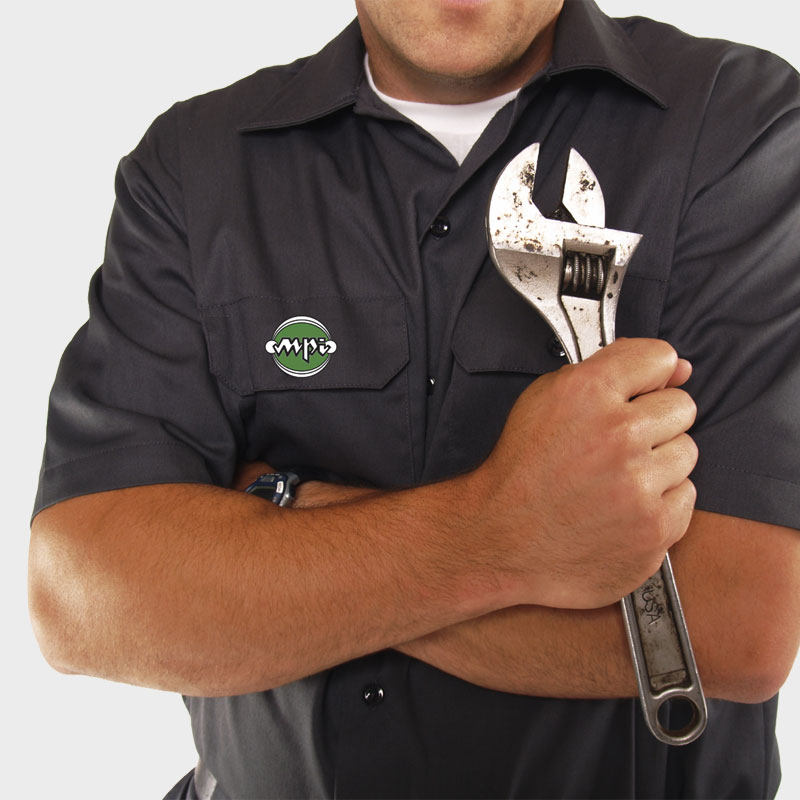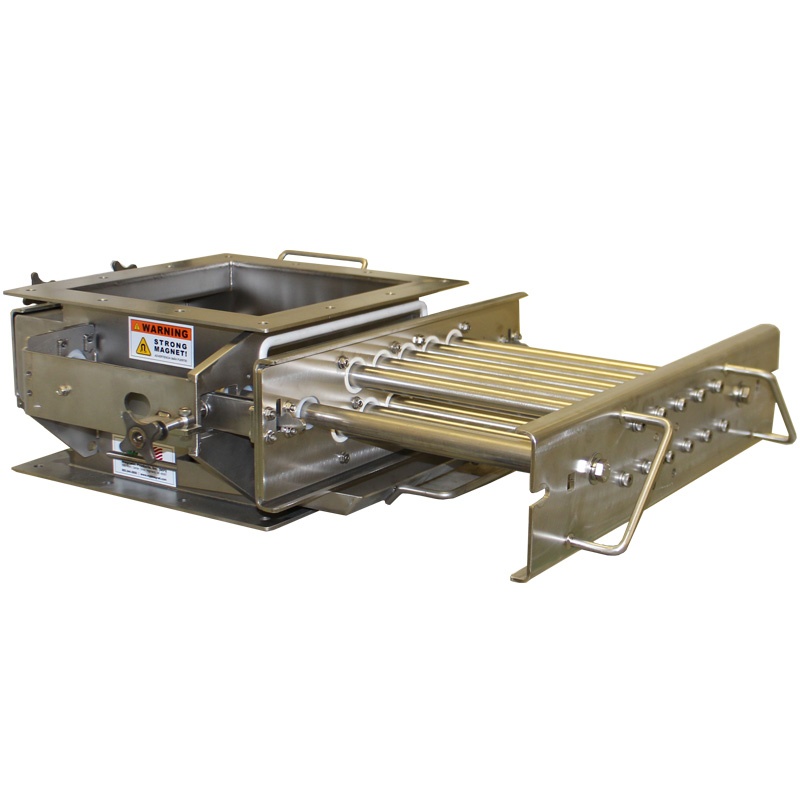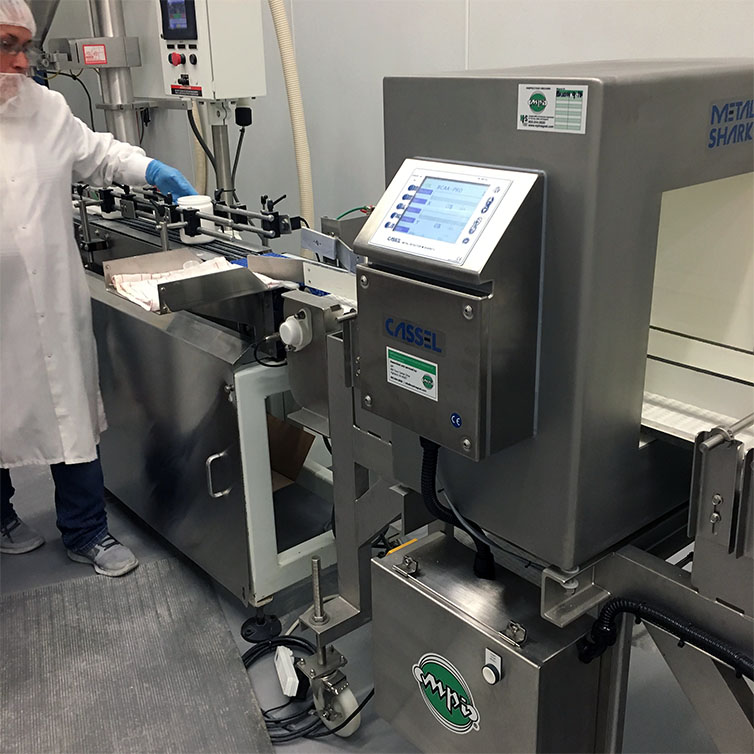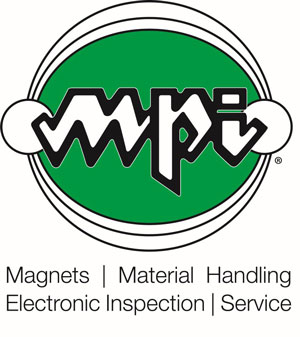Magnetic Chucks
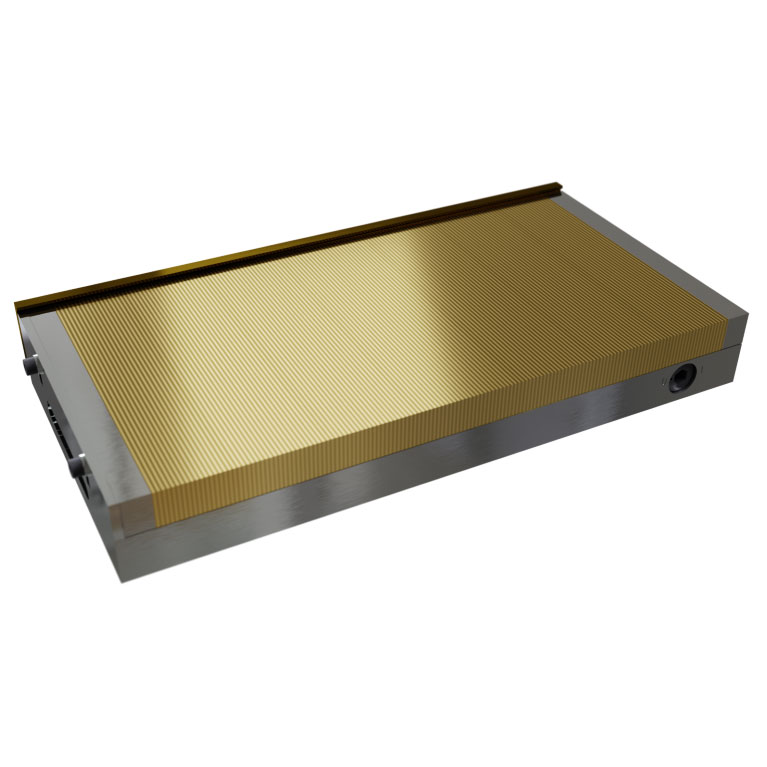
Permanent Chucks
Permanent magnetic chucks provide a high holding force during milling, turning and grinding… more
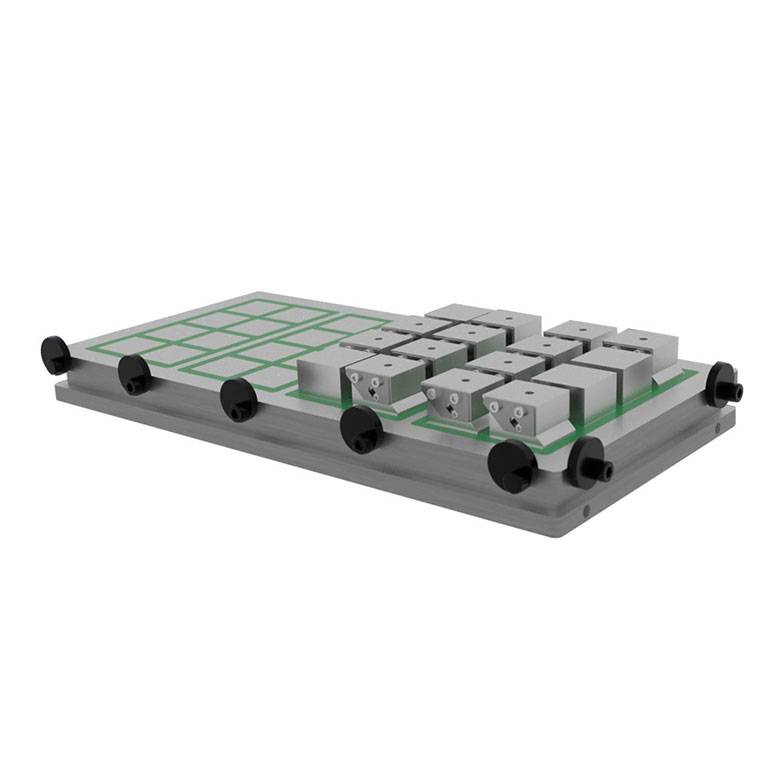
ElectroPermanent Chucks
ElectroPermanent chucks switch On/Off by a pulse of electric current… more
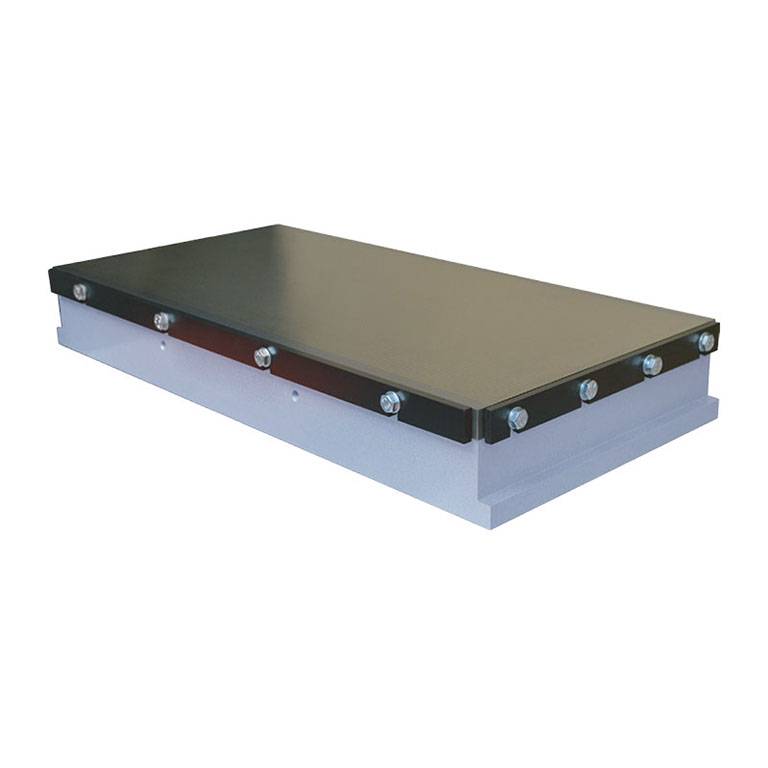
Electromagnetic Chucks
Electromagnetic chucks generate an efficient and uniform magnetic field… more
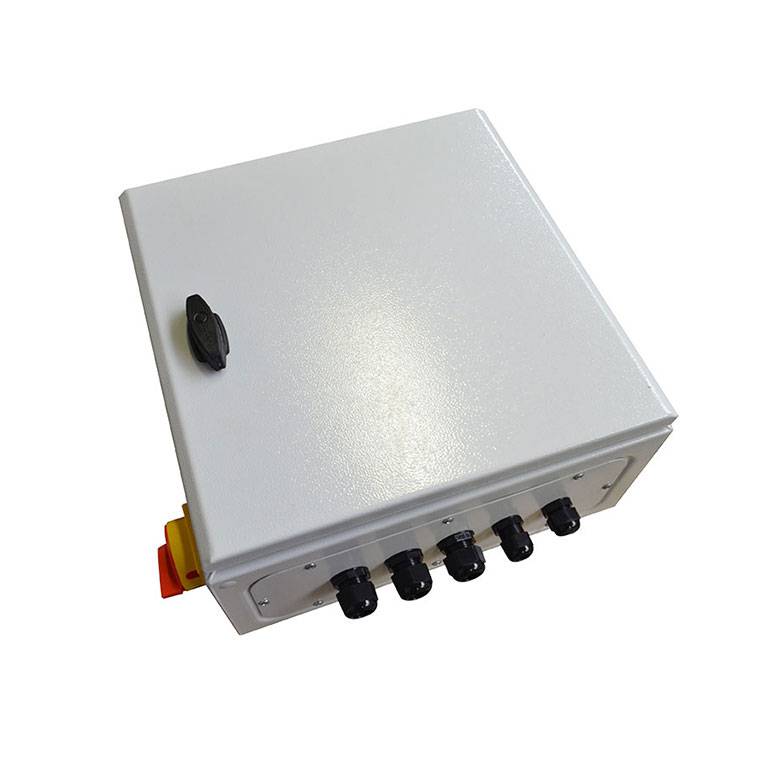
Chuck Control Units
Chuck Control Units supply the power for Electromagnetic and ElectroPermanent chucks… more
Workholding Magnetic Chucks
Accelerate your work during machining ferromagnetic materials. Magnetic chucks are modern devices replacing vices, mechanical clamps and fixtures. Using electromagnetic, electropermanent, and permanent magnetic chucks for clamping and unclamping of the machined components saves time, allows the workpiece to be accessible from five (5) sides, and does not damage the product.
The use of magnetic chucks for workholding has become a popular option in manufacturing facilities across the country. The goal is simple. Hold the blank, casting, or forging to be machined with enough grip to allow milling, turning, drilling, or grinding. Traditionally, workpieces for machining were held in place using vises or fixtures. While magnetic chucks have been an accepted method of workholding in surface grinding applications, they are now finding acceptance in general machine shops. Magnetic chucks reduce setup, increase access to the many sides of a workpiece, and simplify workholding.
A key advantage of magnetic chucks for workholding is consistent clamping. Unlike mechanical clamps and vises, there are no variations on how tightly the workpiece is held. Full support of the workpiece is another advantage of magnetic chucks. For example, if toe clamps are used on the outer surfaces of a workpiece, supporting the center of the piece is a challenge. These unsupported areas can chatter, resulting in increased cycle time.
Workholding chucks hold the whole workpiece. This complete support reduces chatter and accelerates the process. The lack of clamps allows your equipment to cut without interference. Setup and tear down are critical to a machine shop’s bottom line. Magnetic chucks installed on your machine table; workpieces can be attached to the machine without bolts. Workholding chucks will increase throughput, and reduce costs.
Ferromagnetic materials can only be clamped using magnetism. Most steels are ferromagnetic and have good magnetic properties. Wood, glass, aluminum, and brass are not magnetic. A component is part of the magnetic circuit between the north and south poles of the magnet. The component must close the circuit as best as possible.
MPI workholding magnetic chucks are manufactured in the EU to high quality European standards. Most common sizes of magnetic chucks are available from stock.
Rectangular or Round Chuck? Selecting the Best Chuck for the Application
Your component should cross as many poles as possible to achieve the greatest holding power. To select a chuck shape, consider the application (grinding, milling, drilling, EDM, etc.,) and the range of sizes and thicknesses of the parts that will be held. The maximum holding force is only reached if the part can conduct all available magnetic flux from the magnet pole. If the workpiece thickness is smaller than 50 % of the pole width, the holding force will be weaker.
Rectangular Chucks
Location of workpieces on rectangular or square chucks.

Round Chucks
Location of workpieces on circular chucks.

What are the Different Types of Magnetic Chuck Materials
Permanent Magnetic Chucks
 Permanent magnetic chucks are comprised of highly energized magnetic and ferromagnetic materials, which attract the magnetic steel when used in a certain configuration. Magnets do not lose their magnetic force under normal conditions. Activation and deactivation (switching ON/OFF) is carried out mechanically, by removing the interior system with permanent magnets. A manual lever is used for this action.
Permanent magnetic chucks are comprised of highly energized magnetic and ferromagnetic materials, which attract the magnetic steel when used in a certain configuration. Magnets do not lose their magnetic force under normal conditions. Activation and deactivation (switching ON/OFF) is carried out mechanically, by removing the interior system with permanent magnets. A manual lever is used for this action.
Advantages of Permanent Magnetic Chucks
- No dependence on electric power, safe, with no combined expenses.
- Easy installation and quick removal of the chuck onto another machine.
- No heat generation and thermal deformation of the top plate, which allows very precise machining.
- Usually has a dense pole pitch, very suitable for small and extra-small components.
- Solid construction, virtually maintenance-free with a long-life span.
- Relatively low purchase costs.
Limitations of Permanent Magnetic Chucks
- Limitation of chuck size, usually up to 12” x 24” in size.
- Less to no control of the holding force.
- The mechanical system is less suitable for automated processes.
Electromagnetic Chucks
 The magnetic field in an electromagnetic chuck is generated by coils through which a rectified current flows. There are ferromagnetic cores inside the coils. These cores are magnetized by the electric current. Electromagnets are activated by the control unit, which makes it possible to vary the force of the magnet and the demagnetization of the workpiece.
The magnetic field in an electromagnetic chuck is generated by coils through which a rectified current flows. There are ferromagnetic cores inside the coils. These cores are magnetized by the electric current. Electromagnets are activated by the control unit, which makes it possible to vary the force of the magnet and the demagnetization of the workpiece.
Advantages of Electromagnetic Chucks
- Depending on the coil size, the electromagnets can generate a very strong magnetic field, which means firm clamping of the load.
- Due to the high magnetic field, it is also possible to reliably clamp uneven loads with larger gaps between the load and the chuck.
- The chuck can be supplemented with advanced control systems for fluent control of the force of the magnet and control of the demagnetization cycle.
- This results in simple removal of the workpiece from the chuck.
- It is possible to make any chuck size depending on the workpiece size.
- Operation of the magnets can be manual, automatic, or a combination.
Limitations of Electromagnetic Chucks
- The magnet needs a continuous power supply. Interruption leads to loss of holding force.
- Regarding application, an emergency power supply may be required.
- The current in the coils generates heat, which limits the accuracy.
Electropermanent Chucks
 Electropermanent handling systems use a combination of permanent and electromagnetic technology. They are built on the ability of certain ferromagnetic materials to become a permanent magnet based on the short action of a strong direct current. They remain in this state without an external power supply. During the demagnetization process, pulses of alternating current will demagnetize the ferromagnetic materials again. An electric current is only needed for clamping/unclamping the load.
Electropermanent handling systems use a combination of permanent and electromagnetic technology. They are built on the ability of certain ferromagnetic materials to become a permanent magnet based on the short action of a strong direct current. They remain in this state without an external power supply. During the demagnetization process, pulses of alternating current will demagnetize the ferromagnetic materials again. An electric current is only needed for clamping/unclamping the load.
Advantages of Electropermanent Chucks
- High holding force, which makes it possible to apply heavy milling operations.
- High level of safety in terms of independence of electric power. The workpiece will not be released even after disconnecting the power supply.
- Minimum electrical consumption, used for switching ON/OFF only.
- Operation using the control unit allows its application in automated system operations.
- The temperature in the chuck does not change in the OFF/ON positions, which means there are no negative effects caused by different temperatures.
- It is possible to design and manufacture any system regardless of size, delivering customized solutions.
Limitations of Electropermanent Chucks
- Higher price than that of permanent chucks.
- Compared to electromagnets, there is a higher sensitivity to the air-gap between the chuck and the component to be clamped.
- When a malfunction occurs in the control unit, the load can remain clamped.



